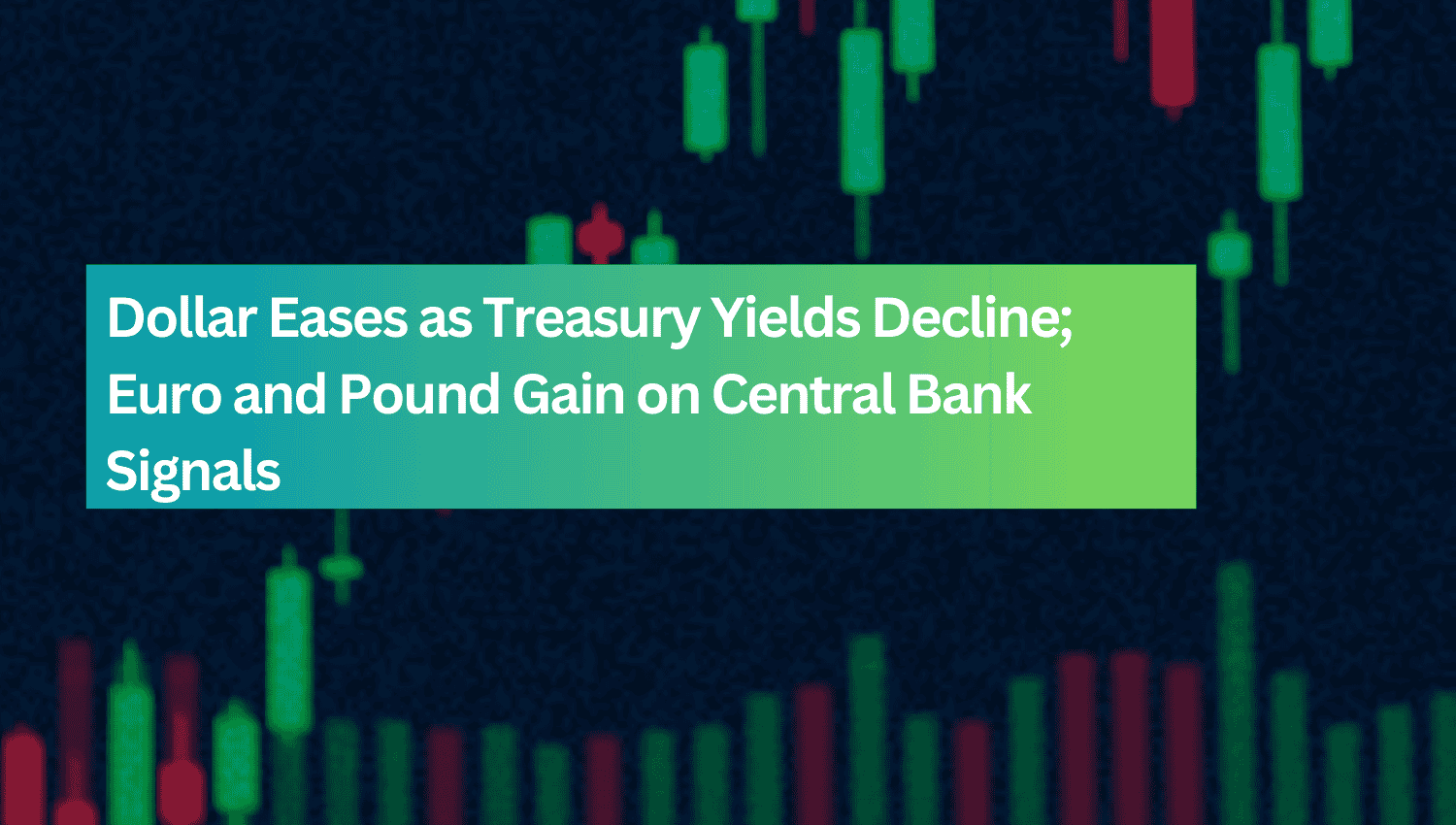Dollar Retreats Amid Lower Yields and Oil Prices

Dollar Retreats Amid Lower Yields and Oil Prices
The U.S. dollar pared back its weekly gains on Thursday, pressured by a decline in Treasury yields and softer oil prices. While U.S. jobless claims fell unexpectedly, reflecting a robust labor market, October’s flash Composite PMI rose to 54.3, with businesses increasing prices at the slowest rate in over four years—indicating possible easing inflation pressures. Cleveland Fed President Beth Hammack noted that while inflation pressures are declining, they remain above target levels.
Euro Gains as ECB Officials Curb Rate Cut Expectations
The euro strengthened, rising 0.36% against the dollar, as European Central Bank (ECB) officials worked to temper market expectations for deep rate cuts. Despite signs of contracting eurozone business activity, a better-than-expected German PMI lent modest support to the euro, offering a hopeful signal amid broader economic challenges in Europe.
British Pound Rises on Speculation of Increased Fiscal Flexibility
The British pound climbed 0.36% following a rise in gilt yields, buoyed by reports suggesting that British finance minister Rachel Reeves may alter fiscal assessments to expand public spending. This potential fiscal adjustment supported investor sentiment, providing additional strength to the pound.
Yen Sees Relief on BoJ Governor’s Comments Amid Dollar Weakness
The yen experienced some recovery, with USD/JPY dropping 0.68%, as declining Treasury yields and comments from Bank of Japan Governor Kazuo Ueda influenced trading. Ueda noted that recent yen depreciation partially reflects optimism around U.S. economic conditions, lending some support to the yen.
Market Sentiment Mixed as Investors Balance Growth and Policy Signals
Market sentiment remains cautiously optimistic as investors weigh global growth prospects, monetary policy directions, and geopolitical risks. The slight decline in U.S. Treasury yields reflects investor caution, potentially signaling expectations for moderated Fed rate hikes. The S&P 500 rose by a modest 0.23%, led by consumer discretionary and real estate sectors, while oil prices fell 1% on concerns over European growth. Gold benefited from heightened safe-haven demand, rising 0.73%, while copper held steady despite global growth concerns, with Goldman Sachs maintaining a bullish long-term forecast for 2025.
Currency Market Moves: Euro and Pound Strengthen, Yen Gains on Dollar
In the currency markets, the euro and pound made gains against the dollar, with EUR/USD rising 0.36% as ECB officials managed market expectations on rate cuts, aided by a positive German PMI surprise. USD/JPY fell 0.68% as the yen strengthened amid lower Treasury yields and BoJ comments. The pound climbed on hopes of fiscal spending adjustments in the U.K., while the Australian dollar edged up by 0.08%, though gains were limited due to global growth concerns affecting demand for commodity-linked currencies. Cross-pairs like EUR/JPY and GBP/JPY fell 0.32% and 0.29%, respectively, while AUD/JPY slipped 0.59% as risk-off sentiment weighed on the Aussie.
Outlook: Dollar Faces Potential Pressure as Inflation Signals Cool
Looking ahead, the dollar could face continued pressure if Treasury yields decline further and inflation indicators point toward moderation, potentially encouraging a more dovish Fed stance. The euro’s outlook hinges on ECB communications and any improvement in core eurozone economies, though contraction risks remain. The pound may gain further support if fiscal policy adjustments materialize, but Bank of England guidance and inflation data will be closely watched. The yen’s path will depend on U.S. economic sentiment and potential intervention by Japanese authorities, though BoJ’s dovish stance may limit yen strength. The Australian dollar will likely respond to shifts in commodity prices and risk sentiment, with any deterioration in global growth weighing further on the currency. Currency markets are poised for volatility as fiscal, monetary, and geopolitical factors continue to shape sentiment.

